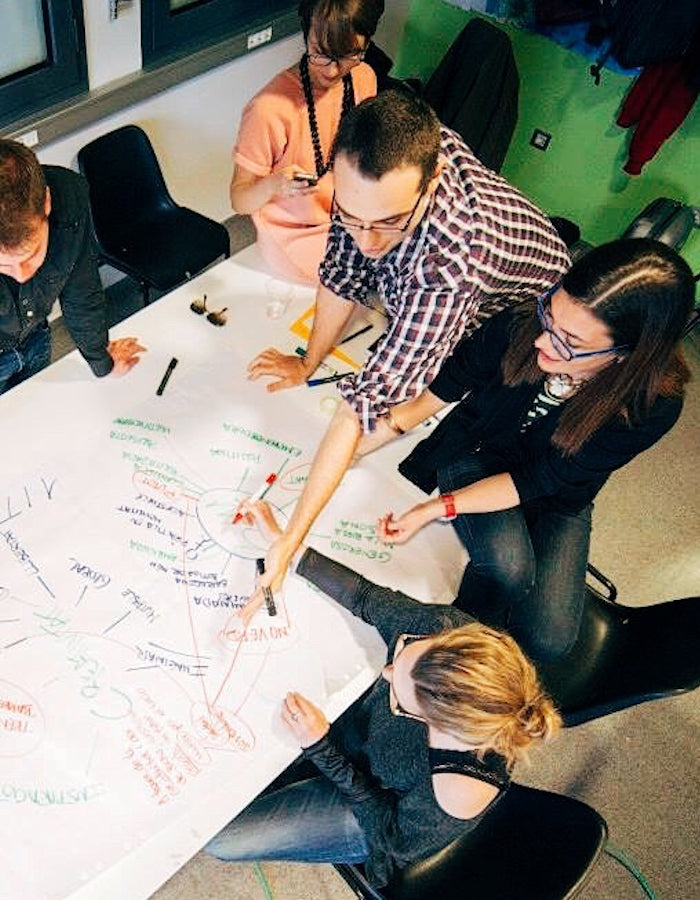
Team Building Training
Building a strong, cohesive team is essential for any organization, but it’s not always easy. Miscommunication, lack of trust, and unclear roles can lead to inefficiency, frustration, and disengaged employees. Whether you're struggling to unite a newly formed team or improve collaboration within an existing one, the challenges of teamwork can slow progress and impact overall success. However, investing in team building training helps break down barriers, align team members with shared goals, and create a more productive and motivated workforce.
With HRDQ's team-building training courses and activities, participants can learn how to surface, diagnose, and work through the issues that impede effective teamwork.
-
Team Effectiveness Profile
Regular price From $32.99 USDRegular priceUnit price / per -
What's My Team Member Style
Regular price From $6.99 USDRegular priceUnit price / per -
Jungle Escape
Regular price From $61.99 USDRegular priceUnit price / per -
Benchmarks of Team Excellence
Regular price From $32.99 USDRegular priceUnit price / per -
Extraordinary Teams Inventory 2.0
Regular price From $102.99 USDRegular priceUnit price / per -
Black Bear
Regular price From $133.99 USDRegular priceUnit price / per -
Team-Work & Team-Roles
Regular price From $133.99 USDRegular priceUnit price / per -
Mars Rover Challenge
Regular price From $11.99 USDRegular priceUnit price / per -
Effective Team Member Profile Assessment
Regular price From $32.99 USDRegular priceUnit price / per -
Five Dysfunctions of a Team
Regular price From $20.99 USDRegular priceUnit price / per -
Tall Ships Game
Regular price From $41.99 USDRegular priceUnit price / per -
Cave Without a Name
Regular price From $133.99 USDRegular priceUnit price / per -
Beyond the Valley of the Kings
Regular price From $133.99 USDRegular priceUnit price / per
Want to know more about Team Building Training?
More Information
The Foundation of Success: Building Stronger Teams
Team building is crucial to a company's success because it fosters collaboration, enhances communication, and strengthens employee relationships. When teams work well together, they become more efficient, innovative, and motivated, leading to higher productivity and overall job satisfaction. A strong team also cultivates trust and a positive work environment, which reduces conflicts and improves problem-solving abilities.
Additionally, team building helps align employees with the company's goals, ensuring everyone works toward a shared vision. It encourages adaptability and resilience, which are essential in today's fast-paced business landscape. Companies that invest in team building training experience improved employee engagement, reduced turnover, and a stronger organizational culture, all of which contribute to long-term success.
Five Categories of Team Effectiveness
If a team loses sight of its mission, has ineffective group roles, or has poor organizational processes, the individuals, teams, and organizations will suffer. Here are five categories of team effectiveness that are crucial to develop:
- Mission, Vision, and Goals: Well-functioning organizations have a clear vision of the future and defined goals. They have a mission statement and purpose. They collaboratively develop plans and complete their work with company objectives in mind.
- Team Roles: Work in an organization should be organized to support the group's function. Team roles and accountability should be clear to everyone. Employees should have a clear job description and follow their organizational chart.
- Operating Processes: There needs to be a standard operating process for employees. Policies and procedures can manage the work of the group and support both task and maintenance needs. Task needs are activities required to accomplish work objectives, and operating processes include problem-solving, decision-making, and conflict management.
- Interpersonal Relationships: Interpersonal relationships need to be strong to achieve goals. Every team member needs to work well with others and develop trusting relationships.
- Inter-team Relationships: Teams across the organization also need to be able to work together. Some groups operate within different time frames, have different goals, or have different policies, but they must all work together in the organization to achieve the same overarching goals.
The Key Outcomes of Team Building Training
- Enhanced Communication: Effective communication is the cornerstone of a successful organization. Team building training promotes open and honest dialogue, minimizing misunderstandings and fostering a more cooperative working environment.
- Boosted Morale: When workmates genuinely bond with their colleagues, they feel more valued, resulting in increased job satisfaction, higher engagement, enhanced productivity, and greater loyalty.
- Heightened Critical Thinking: Combined teamwork fosters innovative thinking and imaginative analytical reasoning. Members learn to harness each other's strengths and perspectives, making the team more resilient in the face of adversity.
- Reinforced Trust: Trust is the adhesive that holds a team together. Through mutual support and team building training, coworkers cultivate trust by supporting each other, discovering individual capabilities, and fostering a sense of dependability within the group.
- Conflict Resolution: No team is exempt from conflict, but a well-trained team knows how to confront and resolve problems constructively. Team building provides a safe space for addressing issues and finding solutions that benefit everyone.
HRDQ's Team Building Training
HRDQ improves team building by offering research-based training solutions, assessments, and experiential learning activities to enhance teamwork, communication, and collaboration. Our tools help organizations identify team strengths and weaknesses, improve interpersonal dynamics, and develop essential skills for effective teamwork.
FAQ's
What are the primary objectives of team building?
The primary goal of team building is to forge connections and ties among individuals to create a successful group, leading to increased collaboration, planning, employee engagement, and communication.
What are the outcomes of team building training for employees?
The outcomes of team building training for employees include determining the team's condition, recognizing the abilities needed for positive workplace changes, creating positivity and synergy among team members, establishing goals and direction, understanding group dynamics and talents, creating procedures for assembling a successful task force, and improving group communication.
What are the benefits of team building for associations and individuals?
The benefits of team building include better business outcomes, increased creativity and flexibility, greater job satisfaction, and improved performance in handling urgent tasks and critical thinking.


















